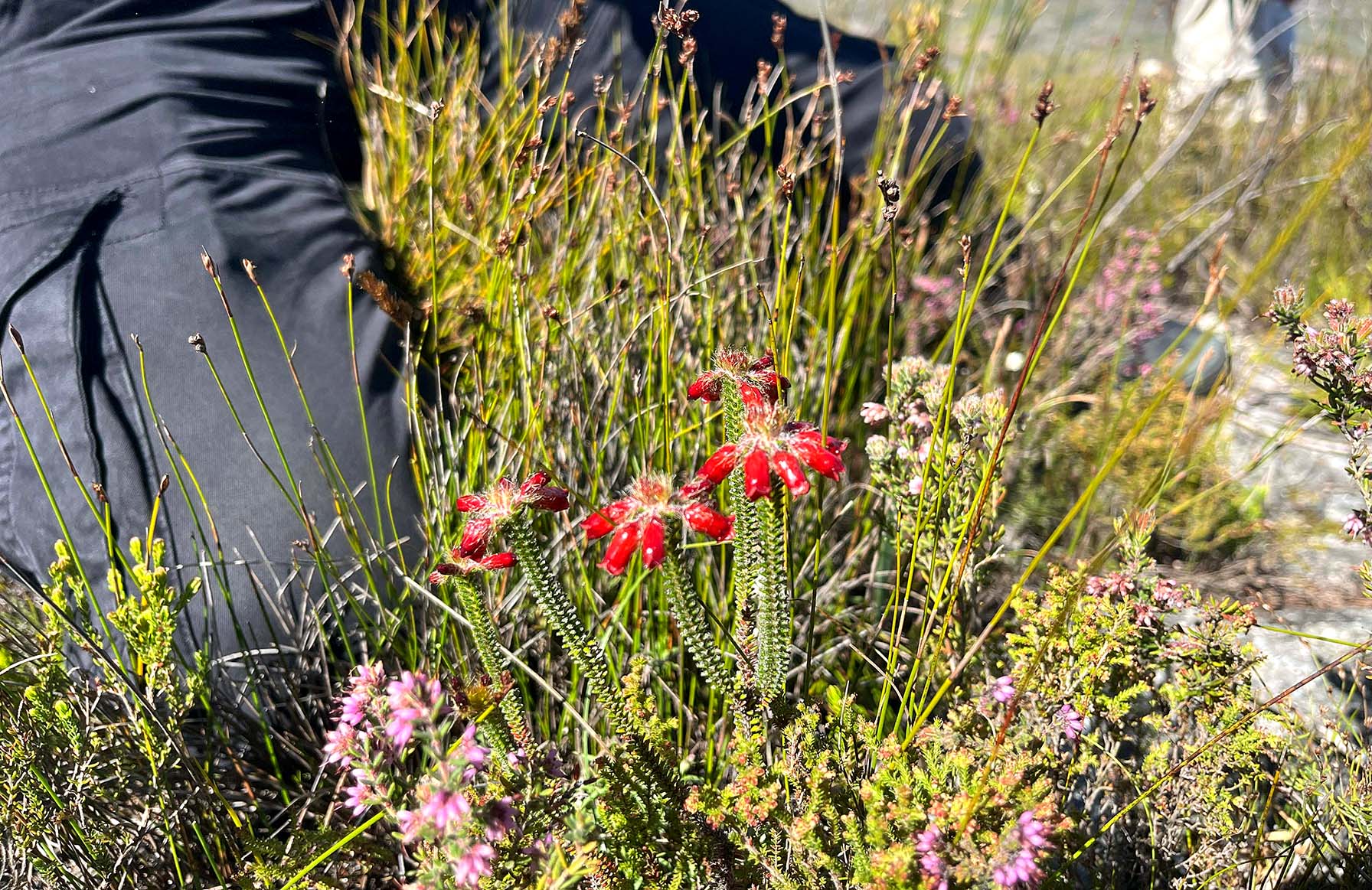In September, a small team from CapeNature and the Custodians of Rare and Endangered Wildflowers (Crew) located eight surviving plants of Erica cunoniensis on Buffelstalberg. In 2012 about 200 people combed the area but had found no trace of it.
The first sighting was made by pupil field ranger Sylvia Wolita, who said it was a reminder that nature was both fragile and resilient. The sighting was met with great excitement, said CapeNature spokesperson Luke Folb.
Kogelberg sits at the heart of the Kogelberg Biosphere Reserve, South Africa’s first Unesco-registered biosphere (1998). It spans about 103,000 hectares plus a 24,500 hectare marine component and stretches from the mountains above Gordon’s Bay along the coast to just beyond Hermanus, and inland past Botrivier to the Grabouw/Elgin area. It’s managed through core, buffer and transition zones.
Recognised as the “heart of the Cape Floral Kingdom”, the biosphere contains more than 1,880 plant species, including 77 local endemics found nowhere else. The marine area has more than 3,500 endemic species.
/file/dailymaverick/wp-content/uploads/2025/10/IMG_5012.jpeg)
This exceptional richness underpins Kogelberg’s global significance and explains why small, remnant populations like E. cunoniensis can persist in inaccessible refuges.
Biosphere zoning matters for survival stories like this. Core areas are legally protected for long-term biodiversity, buffer zones cushion these cores and transition areas are where towns and farms embrace sustainability. It’s a framework that enables research access, responsible tourism, alien-clearing and fire management without compromising irreplaceable habitat.
CapeNature staff say the find vindicates years of patient monitoring and collaboration with citizen scientists through Crew. Field ranger Cairestine Lottring said combining expertise, curiosity and commitment ensured that even the rarest species were not forgotten. It’s a message that resonates across a biosphere grappling with invasive species, development pressure and climate-exacerbated fire risk.
As Wolita put it, the fynbos still holds secrets: “Conservation’s job is to keep looking — and keep the conditions right for those secrets to endure.” DM




 The elusive, endangered Erica cunoniensis.
(Photo: CapeNature)
The elusive, endangered Erica cunoniensis.
(Photo: CapeNature)